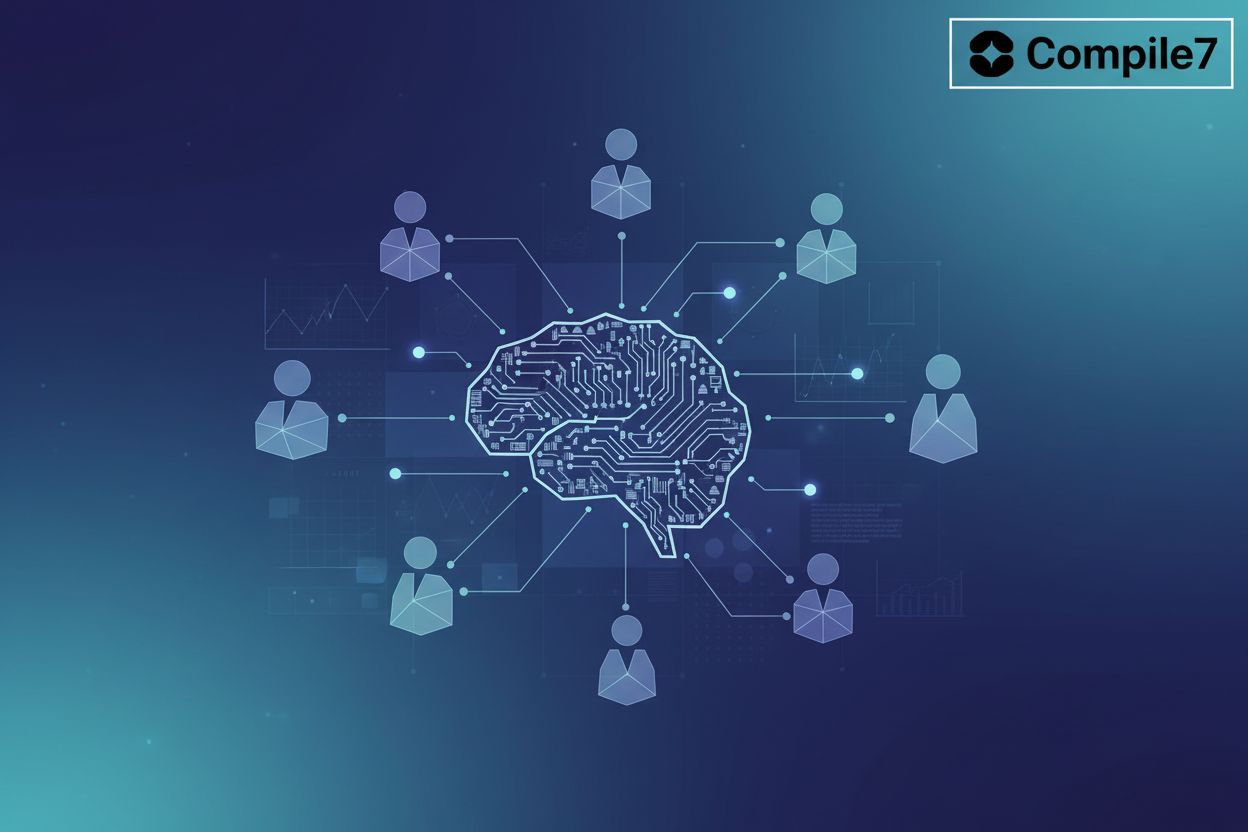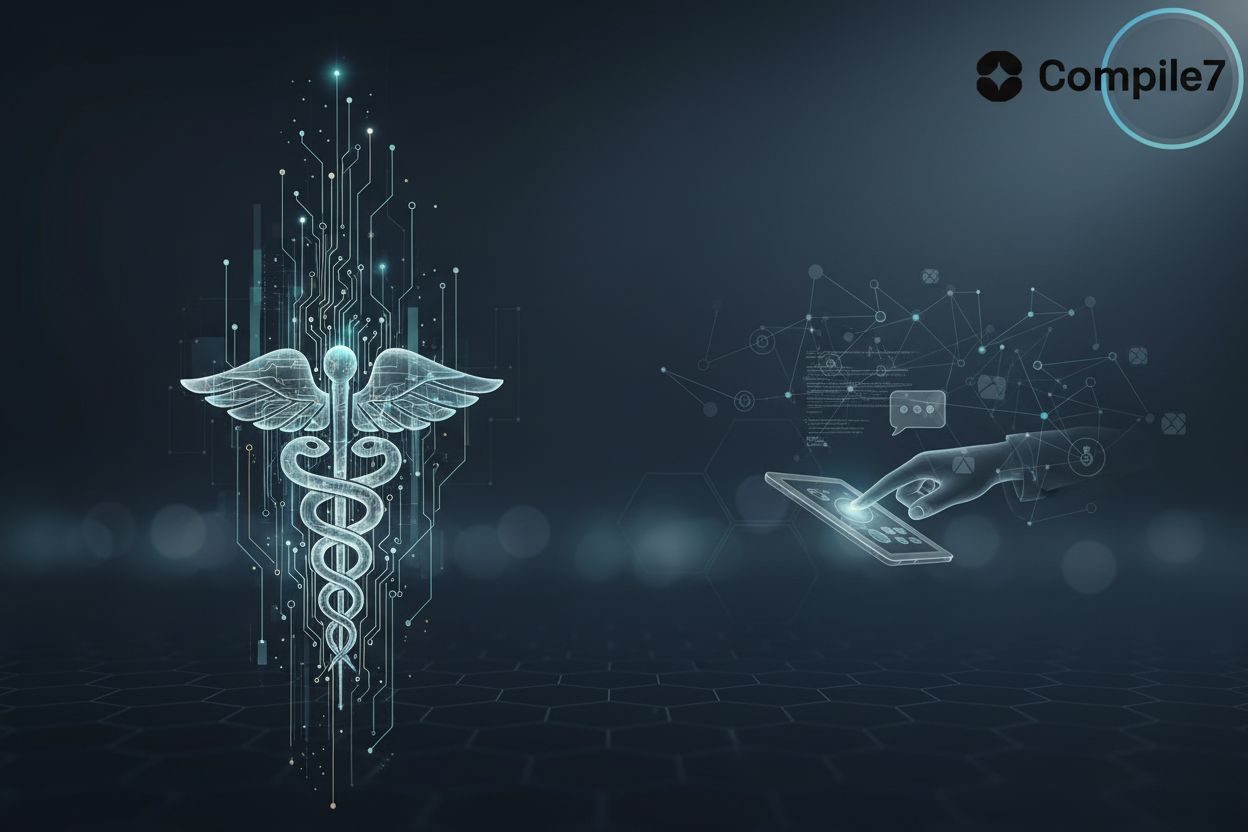AI Observability and Monitoring: Ensuring Reliability and Performance of AI Agents and Solutions
Understanding the Need for AI Observability and Monitoring
AI systems are rapidly transforming industries, but their complexity presents new challenges. How can we ensure these systems are reliable and perform as expected?
AI systems are becoming increasingly complex, often involving numerous components and dependencies. Without proper observability, managing and troubleshooting these systems can be a nightmare. The shift from traditional monitoring to observability helps us handle "unknown unknowns" – the unpredictable issues that arise in complex systems.
For example, in healthcare, an AI-driven diagnostic tool might use multiple algorithms to analyze patient data. If the system provides an inaccurate diagnosis, it's essential to understand why the error occurred, not just that it occurred.
Reliable AI systems are critical for business automation. Failures can lead to downtime, errors, and disruptions to key processes. Ai observability and monitoring help mitigate these risks, ensuring consistent performance and preventing costly mistakes.
Consider a retail company using ai for inventory management. If the ai system miscalculates demand, it could lead to overstocking or stockouts, impacting revenue and customer satisfaction. Effective monitoring can quickly identify and rectify such issues.
Compile7 develops custom ai agents tailored to specific business needs, offering solutions for customer service, data analysis, content creation, and process automation. Our ai agents enhance productivity and transform business operations by automating repetitive tasks and providing intelligent insights. Compile7's ai agents integrate seamlessly with existing systems, ensuring a smooth transition and minimal disruption to workflows. We provide ongoing support and maintenance to ensure optimal performance and continuous improvement of ai agent solutions. Contact us today to learn how we can help transform your business!
Understanding the need for ai observability and monitoring is the first step in ensuring the reliability and success of ai solutions.
Monitoring vs. Observability: A Key Distinction for AI
Is monitoring just observability by another name? Not quite. While related, they address different aspects of ensuring ai system reliability.
Traditional monitoring focuses on detecting known issues by tracking predefined metrics and setting up alerts. It answers the question: "Is the system working as expected?" Monitoring is a systematic practice of collecting and analyzing aggregated data from IT systems.
- Monitoring relies on a predefined set of metrics, such as CPU usage, memory consumption, and error rates. When these metrics exceed certain thresholds, alerts are triggered, notifying operations teams of potential problems.
- For example, in a financial trading system, monitoring might track the latency of trade executions. If latency increases beyond an acceptable level, an alert is sent to investigate potential network issues.
- However, monitoring's reactive nature and reliance on predefined metrics limit its ability to address complex, dynamic ai systems. It struggles to uncover "unknown unknowns" – unpredictable issues outside the scope of predefined metrics.
Observability, on the other hand, aims to understand the internal state of a system by examining its outputs. It answers the questions: "Why is the system behaving this way?" and "How can we improve it?".
- Observability emphasizes collecting and analyzing diverse telemetry data, including logs, metrics, and traces, to provide a holistic view of system behavior. This approach enables teams to uncover previously unknown issues and understand their root causes.
- Consider an ai-powered fraud detection system in banking. Observability allows analysts to trace the path of a suspicious transaction through various microservices, identifying the specific component contributing to a false positive.
- Observability takes a proactive approach to problem-solving, allowing teams to identify and resolve issues before they impact end-users. It helps in complex cloud-native applications and distributed systems, which frequently exhibit unpredictable security and performance issues that cannot be anticipated.
The table below highlights key differences between monitoring and observability:
Monitoring and observability are complementary, not mutually exclusive. Monitoring provides the initial alerts, while observability helps diagnose the underlying causes. As ai systems grow more complex, observability becomes essential for ensuring reliability and performance.
The Three Pillars of AI Observability
Ai observability relies on three essential pillars, offering a comprehensive view into the behavior and performance of ai systems. These pillars provide the necessary data to understand what's happening within these complex systems and why. Let's explore each in detail.
Logs are chronological records of events within an ai system. These records provide a detailed history, useful for debugging and understanding system behavior. Different types of logs offer unique insights.
Types of Logs:
- Error logs record errors and exceptions, crucial for identifying issues.
- Access logs track user access, helpful for security analysis.
- Application logs provide application-specific information, valuable for understanding the flow of data.
Best Practices: Generating detailed logs is crucial. Include timestamps, event descriptions, and relevant contextual information. Centralized logging systems, like cloud-based solutions, simplify collection and analysis.
Analysis Tools: Tools like the ELK Stack (Elasticsearch, Logstash, Kibana) help analyze log data. These tools allow you to search, filter, and visualize logs, making it easier to identify patterns and anomalies.
Metrics provide numerical data points about ai system performance and health. They offer insights into system behavior over time, enabling proactive issue detection. Key metrics include accuracy, latency, and throughput.
- Key Metrics:
- Model Accuracy indicates how well the ai model performs its task.
- Latency measures the time it takes for the model to respond to a request.
- Throughput indicates the number of requests the model can handle in a given time period.
- Infrastructure Metrics: CPU usage, memory consumption, and network I/O are also important. These metrics help identify resource bottlenecks and infrastructure-related issues.
- Tools and Techniques: Tools like Prometheus and Grafana collect and visualize metrics. They allow you to create dashboards and set up alerts based on metric thresholds.
In distributed ai systems, requests often travel through multiple microservices. Traces track the path of a request, helping identify bottlenecks and latency issues. Distributed tracing is essential for understanding the flow of requests in complex systems.
Understanding Distributed Tracing: Traces provide an end-to-end view of a request's journey. Each step in the process is represented as a span, showing the time spent in each service.
Identifying Bottlenecks: By analyzing traces, you can pinpoint the services causing delays. This information helps optimize performance and reduce latency.
Tools and Techniques: Tools like Jaeger and Zipkin implement distributed tracing. They collect trace data and provide visualizations to understand system behavior.
These three pillars – logs, metrics, and traces – form the foundation of ai observability, providing a holistic view of system behavior. Understanding how they work together is crucial for ensuring the reliability and performance of ai solutions.
Implementing AI Observability: Best Practices and Tools
Implementing ai observability is like setting up a sophisticated weather station for your ai systems – without the right practices and tools, you're flying blind. How do you ensure your ai systems are not just running, but running well?
To effectively observe ai systems, you must instrument ai agents, models, and infrastructure. This involves embedding code that captures logs, metrics, and traces at key points. This instrumentation provides the raw data needed for observability.
- AI Agents and Models: Instrumenting ai agents involves capturing data about their decision-making processes, resource utilization, and interactions with other components. For example, in a fraud detection system, you might track the features used for each prediction, the model's confidence score, and the outcome of the decision.
- Infrastructure: Monitoring the underlying infrastructure is equally important. This includes tracking CPU usage, memory consumption, network latency, and storage I/O.
- OpenTelemetry: Standardize data collection using OpenTelemetry, a vendor-neutral, open-source project. OpenTelemetry is a key tool for simplifying observability by providing a unified approach to collecting telemetry data.
- Automation: Automate instrumentation to reduce manual effort and ensure consistent data collection. This can involve using tools that automatically inject instrumentation code into your applications or using configuration management systems to deploy monitoring agents.
Selecting the right tools is critical for implementing ai observability. Several platforms offer comprehensive features for collecting, analyzing, and visualizing observability data.
- Popular Platforms: Platforms like Dynatrace, New Relic, Datadog, and Honeycomb provide comprehensive observability solutions. These tools offer features such as automated instrumentation, anomaly detection, root cause analysis, and customizable dashboards.
- Selection Considerations: Choose tools based on the specific needs of your ai systems. Consider factors such as the complexity of your systems, the volume of data generated, and the expertise of your team.
- Open-Source Alternatives: Explore open-source alternatives like Prometheus, Grafana, Jaeger, and Zipkin. These tools can be a cost-effective option, but they may require more manual configuration and management.
Collecting observability data is only the first step. Effectively correlating and analyzing this data is essential for gaining actionable insights.
- Correlation Techniques: Correlate logs, metrics, and traces to gain a holistic view of system behavior. For example, if a spike in latency is observed, correlate this with logs and traces to identify the root cause.
- AI and Machine Learning: Use ai and machine learning for anomaly detection and root cause analysis. These techniques can automatically identify unusual patterns and help pinpoint the underlying issues.
- Dashboards and Visualizations: Create dashboards and visualizations to make insights accessible and actionable. Use tools like Grafana to create custom dashboards that display key metrics and trends.
Implementing ai observability is not a one-time task but an ongoing process. Regular monitoring and analysis are essential for ensuring the reliability and performance of ai systems.
AI-Driven Observability: Enhancing Insights with Machine Learning
Ai systems can drown you in data, but what if that data could actually tell you what's going to happen next? Ai-driven observability uses machine learning to anticipate problems and provide deeper insights.
Ai-driven observability excels at predictive operations, using historical data to forecast potential failures and performance slowdowns. These systems move beyond simple alerting and actively anticipate issues.
- By analyzing trends in resource utilization, error rates, and user behavior, machine learning models can predict when a system is likely to become overloaded or unstable.
- Automated anomaly detection algorithms continuously monitor system behavior, flagging deviations from established baselines. This is particularly useful in complex ai systems where identifying abnormal behavior manually would be nearly impossible.
- This proactive approach reduces downtime and improves system reliability.
When issues do arise, ai can accelerate root cause analysis. Instead of relying on manual investigation, ai algorithms can analyze logs, metrics, and traces to pinpoint the underlying cause of a problem.
- Ai-powered systems can correlate events across different parts of the IT stack, identifying dependencies and isolating the source of the issue.
- Automated remediation strategies can address problems quickly, often without human intervention. For example, an ai system might automatically scale up resources to handle a sudden increase in traffic or restart a failing service.
- By automating these tasks, ai-driven observability reduces Mean Time To Resolution (MTTR), minimizing the impact of incidents.
Ai can correlate data from across the entire IT stack, providing deeper, contextualized insights into system behavior.
- Ai-driven solutions analyze logs, traces, and metrics collectively, providing deeper, contextualized information.
- This capability allows for rapid identification of problems by analyzing both real-time and historical data, enabling teams to act swiftly before issues escalate.
Ai-driven observability bridges the gap between technical performance and business metrics. By correlating system behavior with key business indicators, organizations can understand how IT issues impact revenue, customer satisfaction, and other critical outcomes.
With ai driving observability, you gain proactive insights that keep your ai systems running smoothly.
Addressing Challenges in AI Observability
Ai observability faces hurdles. Data volume, variety, and skill gaps challenge effective implementation. How can organizations overcome these issues?
- Data volume: Manage growing data with smart sampling and tiering. This means intelligently selecting a representative subset of data to analyze, rather than trying to process everything. Tiering involves storing less frequently accessed data in cheaper storage.
- Data variety: Ensure consistent practices across distributed services. This involves establishing standardized ways to collect and format logs, metrics, and traces, regardless of where they originate. Think about common schemas and data formats.
- Skills: Train teams for data-driven decisions. This requires upskilling your teams in areas like data analysis, machine learning fundamentals, and the specific tools used for observability. Outline training programs covering these areas.
Future Trends in AI Observability and Monitoring
Ai systems are becoming more complex, but the future is bright. Let's explore some key trends shaping ai observability and monitoring.
Integrating security measures into observability tools helps detect vulnerabilities.
Correlating data identifies potential threats.
This supports compliance and streamlines auditing.
OpenTelemetry is a key tool for simplifying observability by providing a unified approach to collecting telemetry data.
Vendor neutrality offers flexibility in observability stacks.
This integrates with popular monitoring tools.
AIOps uses observability data for intelligent automation.
This enables self-healing systems and predictive capabilities.
IT operations transform through full-stack visibility.
These trends drive more efficient, secure, and reliable ai solutions.








